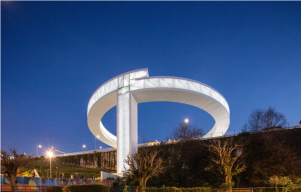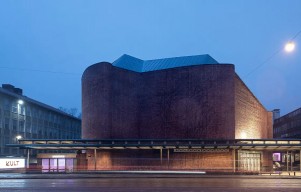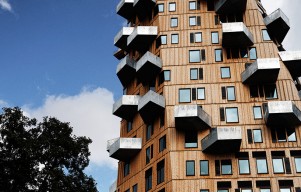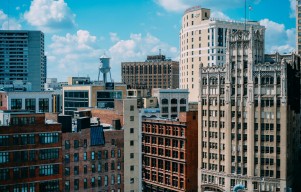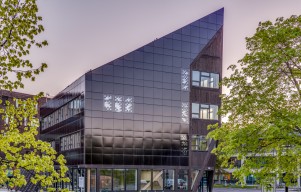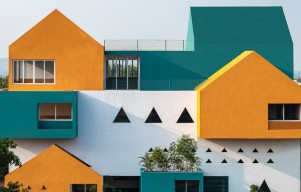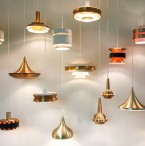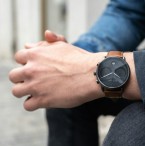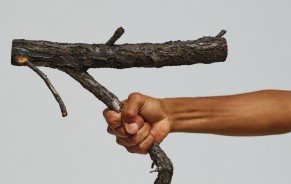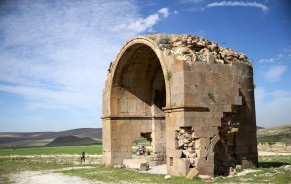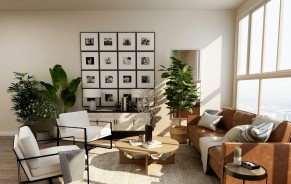In a celebration commemorating 400 years since the first contact between Dutch people and Taiwanese aboriginals, TIBE exhibitors from The Netherlands were selected as "Guest of Honor" country for the 2024 edition of the Taipei International Book Exhibition. Centrally located in Taiwan World Trade Center Hall 1, the Round Pavilion, elaborated and designed by MVRDV, was a landmark of art, design, and green technology from the Netherlands.
With its design of three inter-connected circles encircled by the landscapes of the Netherlands, it is the best manifestation of the past, present, and future of the relationship between the Dutch and the Taiwanese. Every ring stood for a specific function, one focusing on the past, the other welcoming modern Dutch ideals of diversity and unity.
Sustainable Design and Symbolism
Sustainability was the philosophy behind the pavilion's construction. It was made of recycled, recyclable, and reusable materials. The circular structure, a design incorporating scaffolding, represented the transitive nature of the relationship and its elements that were forever interwoven, an image of the same forever union of the two countries.
Wrapped in canvas imprinted with vibrant depictions of Dutch landscapes- the sea, the polder, and the dunes- the pavilion's exterior invited visitors to embark on a journey through time and space. These visuals, inspired by Dutch artistry, not only adorned the pavilion but also found purpose post-exhibition, being repurposed into book bags and pouches.
Also Read: Who Will Claim the Coveted 2024 Pritzker Prize in Architecture?
At the heart of the pavilion stood the polder landscape circle, representing the present. Here, contemporary Dutch literature took center stage, complemented by insights into Dutch design and sustainability initiatives. An amphitheater-style bookshelf provided a platform for engaging presentations and discussions, fostering intellectual exchange throughout the expo.
Adjacent, the sea circle evoked the past, evincing the Dutch legacy of exploration and colonization in Taiwan. Exhibitions featuring artifacts and documents delved into the early stages of this historical narrative, prompting reflection on the complexities of cross-cultural encounters.
Meanwhile, the circle representing the future, adorned with Dutch dunes imagery, served as a haven for children's literature and a space to contemplate values of tolerance and diversity- a nod to the evolving dynamics of global citizenship.
The pavilion's multi-functional and dynamic design with fabulous curtains that separate and connect the concrete rings was the basis of smooth transits and following of individual interests.
Programming and Cultural Exchange
Adverting to the special meaning of the pavilion, Jacob van Rijs - a founding partner of MVRDV - underlined that many facts and ideas of the Netherlands are reflected in this building. The pavilion has shown all aspects of the Dutch identity due to its colonial past and contemporary literature.
Beyond literature, the pavilion showcased Dutch design excellence, with curated shopping areas featuring iconic characters like Miffy and Dikkie Dik alongside highlighted books and merchandise. The collaboration with renowned graphic designer Thonik further underscored the pavilion's commitment to showcasing the best of Dutch creativity.
Central to the pavilion's programming were acclaimed Dutch writers and illustrators, including Thé Tjong-Khing, Ilja Leonard Pfeijffer, and Bibi Dumon Tak, among others, engaging audiences through a diverse array of discussions, workshops, and cultural experiences.
Within the prism of Dutch literature and culture, visitors found themselves in the lively patchwork world conjured by the Circular Pavilion, whether physically or virtually. The pavilion went beyond the boundaries of space, becoming a symbol of dialogue and integration across diverse cultures.
Related Article: "What Is Architecture For?" International Conference in Istanbul Explores the Role of Design in Modern Society
